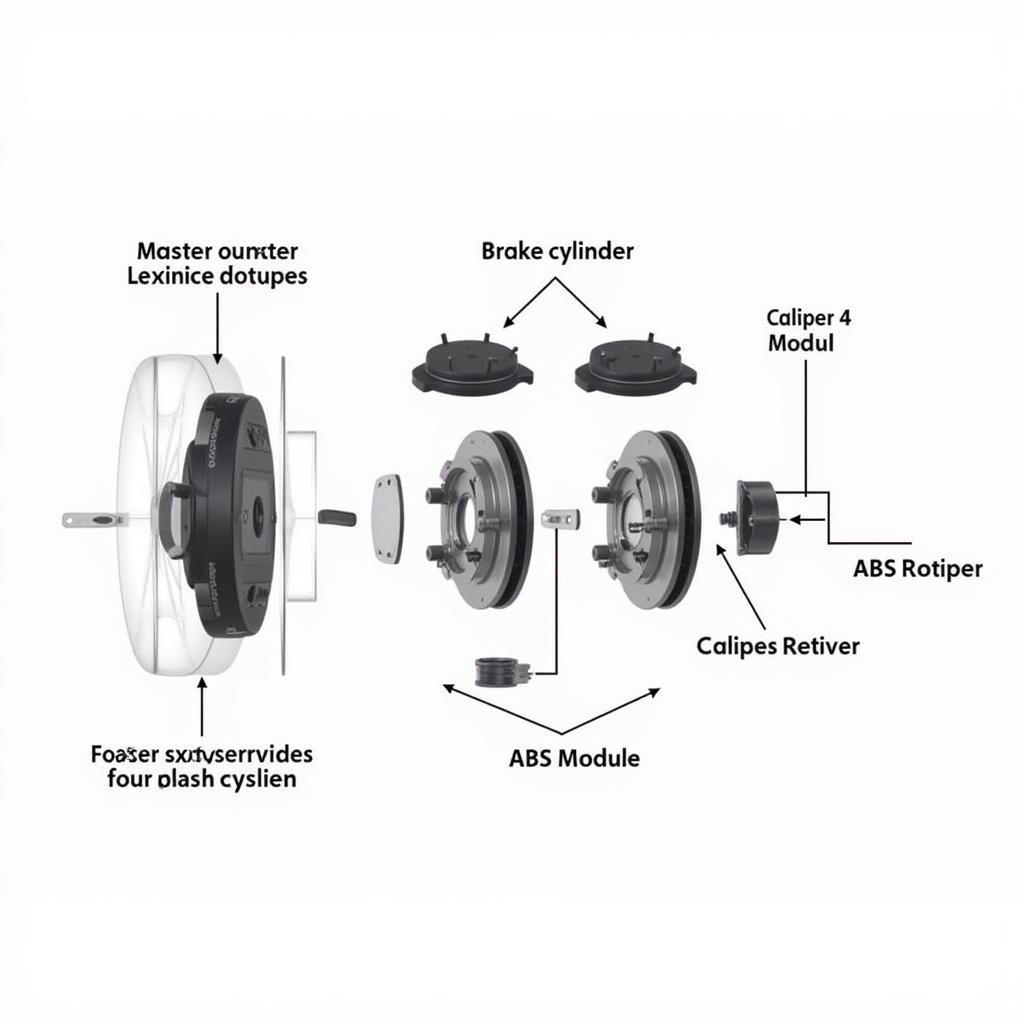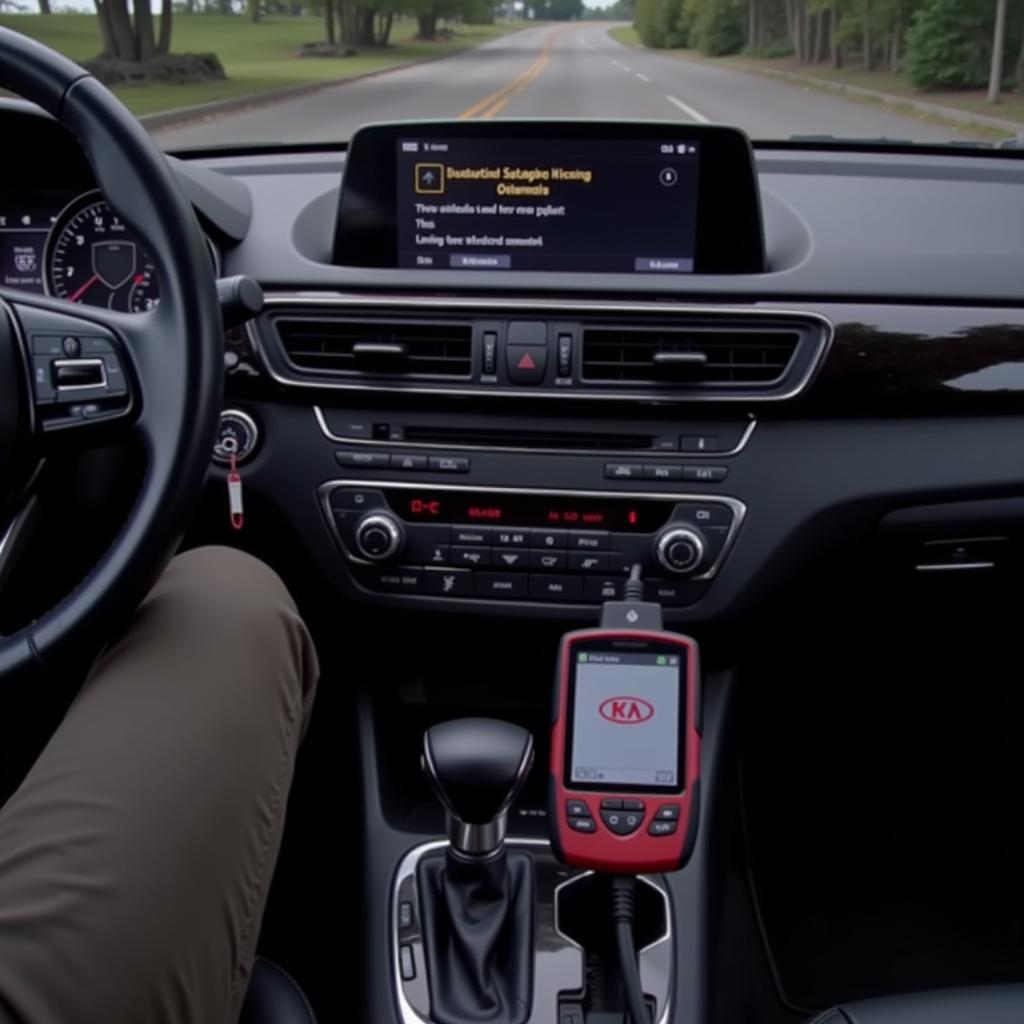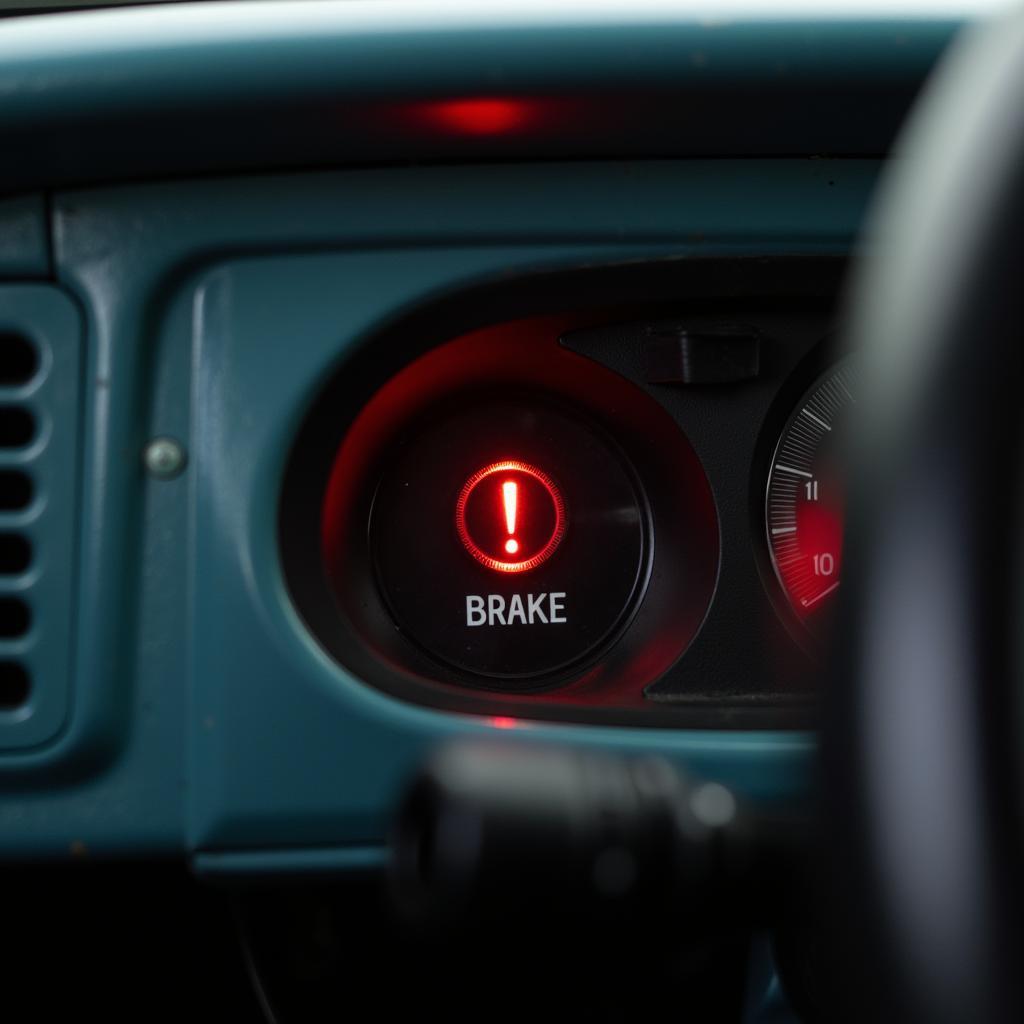The dreaded “check brake” warning light on your Kia Optima Hybrid can be a source of anxiety. This article aims to demystify the kia optima hybrid check brake warning, providing you with the knowledge and resources to diagnose and potentially resolve the issue. We’ll explore common causes, troubleshooting steps, and when professional help is necessary. For owners of specific model years, you might find our resources for the 2014 Kia Optima Hybrid check brake warning particularly helpful.
Understanding the Kia Optima Hybrid Brake System
The Kia Optima Hybrid utilizes a regenerative braking system, which recovers energy during braking to recharge the hybrid battery. This intricate system involves a complex interplay of components, including the brake pedal, hydraulic brakes, electric motor, and control modules. A malfunction in any of these can trigger the check brake warning.
Why does the check brake warning light come on? Several factors can trigger this warning, from low brake fluid to more complex issues like faulty sensors or control modules.
Common Causes of the Check Brake Warning
- Low Brake Fluid: This is often the simplest culprit. Check your brake fluid reservoir and top it off if needed. However, consistently low brake fluid suggests a leak, which requires immediate attention.
- Worn Brake Pads: Brake pads have wear indicators that trigger the warning light when they reach a certain level of wear. Regular brake pad replacement is crucial for safety.
- Faulty Brake Sensors: Sensors monitor various aspects of the brake system, including brake fluid level, pad wear, and ABS function. A malfunctioning sensor can trigger a false warning.
- ABS Issues: Problems with the Anti-lock Braking System (ABS), such as a faulty wheel speed sensor, can also illuminate the check brake warning.
- Issues with the Regenerative Braking System: Specific to hybrids, problems with the regenerative braking system’s components can trigger the warning light.
- Brake Light Problems: Sometimes, a faulty brake light can trigger the warning, particularly if the brake light switch is malfunctioning. Check your brake lights to ensure they are all working correctly.
 Kia Optima Hybrid Brake System Components Diagram
Kia Optima Hybrid Brake System Components Diagram
Troubleshooting the Check Brake Warning
- Check the Owner’s Manual: Your owner’s manual is your first resource. It provides specific information about your Kia Optima Hybrid model and may offer troubleshooting advice.
- Visual Inspection: Inspect your brake pads for wear and tear. Also, check for any visible leaks in the brake lines or around the calipers.
- Check Brake Fluid Level: As mentioned earlier, low brake fluid is a common cause. Ensure the fluid is at the correct level. If it’s consistently low, seek professional help to identify the leak.
- Test Your Brake Lights: Make sure all your brake lights are functioning correctly. If you discover a faulty brake light, you might find our resource on Kia brake light warning helpful.
- Use a Diagnostic Scanner (OBD-II): A diagnostic scanner can read the trouble codes stored in your car’s computer, providing valuable clues about the specific issue.
 OBD-II Scanner Connected to a Kia Optima Hybrid
OBD-II Scanner Connected to a Kia Optima Hybrid
When to Seek Professional Help
If your troubleshooting efforts don’t pinpoint the problem or you’re uncomfortable working on your brakes, it’s best to consult a qualified mechanic. Brakes are a critical safety system, and improper repairs can be dangerous. You might find specific information regarding the 2011 Kia Optima Hybrid check brake warning on our website.
“Ignoring a check brake warning can lead to costly repairs and compromise your safety,” says John Smith, ASE Certified Master Technician. “Early diagnosis is key to preventing further damage.”
Remote Diagnostics and Programming: A Modern Solution
Modern technology now allows for remote diagnostics and programming, offering a convenient and efficient way to address some brake system issues. This involves connecting your vehicle to a specialized diagnostic tool that communicates with our technicians remotely. They can then analyze the data, identify the problem, and even perform software updates or programming to resolve the issue without you needing to visit a physical shop. This is particularly beneficial for software-related glitches that can trigger the check brake warning. Those with a 2012 Kia Optima Hybrid check brake warning might find this particularly useful.
Conclusion
The kia optima hybrid check brake warning shouldn’t be ignored. By understanding the potential causes and using the troubleshooting steps outlined in this article, you can take the first steps towards resolving the issue. Remember, when in doubt, consult a qualified professional. Don’t hesitate to check our specific resource for the 2015 Kia Optima Hybrid check brake warning if you own a 2015 model. Your safety is paramount.
FAQ
- What does the check brake warning light mean? The check brake warning light indicates a potential problem with your braking system, ranging from low brake fluid to more complex issues.
- Is it safe to drive with the check brake warning light on? It’s not recommended. While you might still have braking function, the underlying issue could worsen and compromise your safety.
- How often should I check my brake fluid? It’s a good practice to check your brake fluid level at least once a month.
- How much does it cost to fix a check brake warning issue? The cost varies depending on the specific problem. A simple brake fluid top-up is inexpensive, while more complex repairs can be significantly more costly.
- Can I fix the check brake warning myself? Some simple fixes, like topping off brake fluid, can be done at home. However, more complex repairs require specialized tools and knowledge.
- What is regenerative braking? Regenerative braking recovers energy during braking to recharge the hybrid battery.
- How can remote diagnostics help with the check brake warning? Remote diagnostics allows technicians to analyze your car’s data remotely, identify the problem, and sometimes even fix it through software updates or programming.

